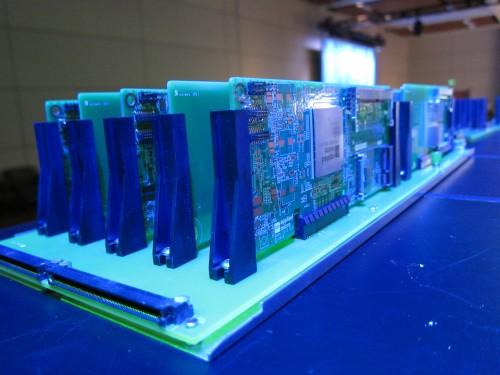Will Group Hug Commoditize the Hardware Market?
Will the Open Compute Project’s Common Slot specification and Facebook’s Group Hug board commoditize the data center hardware market even further? Analyst opinions vary widely, indicating that time and additional development work may be necessary before any sort of consensus is reached. At the Open Compute Summit last week, Frank Frankovsky, director of hardware design and supply chain operations at Facebook, announced both the Open Slot specification and Facebook’s prototype Open Slot board, known as “Group Hug.” Group Hug’s premise is simple: disaggregate the CPU in a way that allows virtually any processor to be linked to the motherboard. This has never been done before with a CPU, which has traditionally required its own socket, its own chipset, and thus its own motherboard. Group Hug is designed to accommodate CPUs from AMD, Intel, and even ARM vendors such as Applied Micro and Calxeda. “If we had left this to industry they probably would have gone out and found the most expensive and esoteric connector on the planet," Frankovsky said at the time. At least in theory, placing all CPUs on an equal footing will level the playing field in a way that makes the CPU market even more competitive on price—and wreck vendors’ margins in the process. Some analysts perceive this as a negative. “It just seems like they’re stifling any innovation in the CPU market with this,” said Paul Teich, a Slashdot columnist, AMD corporate fellow and a member of the team that helped design the original Opteron. Others, however, took a different view. Removing the technical hurdles associated with new microprocessor architecture will encourage more sales, said Nathan Brookwood, a microprocessor analyst with Insight 64. “It gets rid of a lot of other things that keeps people from adopting new processors quickly,” he said. “If you think about a new Xeon processor, AMD coming on line with a new Opteron, they have to get their OEMs all aligned with new motherboards, new chasses, all the rest of it." He added: “If you go with something like this, you have a very simple daughtercard, that goes to an industry standard, and all they need to add is processors and memory, and boy, people can go and upgrade whenever they want.” Virtually every source agreed that the Common Slot spec benefits AMD, which needs to bend over backward to accommodate customers who may be turning towards rival Intel and its Xeon line. (AMD executives, for their part, announced Open 3.0, their first OCP server design, at the summit. Jimmy Pike, a Dell fellow and chief architect and technologist at its Dell Data Center Solutions Group, also endorsed the idea of Group Hug, but said he doubted the new slot technology would make sense in a production environment. For prototyping, he thought Group Hug makes a lot of sense. “I think it’s a great idea,” he said. “It’s going to let companies out there that can’t do everything themselves to put out prototypes out there that we can evaluate. Now, whether or not you can actually have an optimized product around that, I think time will tell. Probably not. But as a general purpose fixture for doing stuff, I think it’s a great idea.” A unified socket structure will allow new entrants to more easily enter the market, agreed Jean Bozman, a vice president with IDC. But the key will be how these new processors plug into the network fabric, which is increasingly becoming one of the key points within the server. “Traditional OEMs will have to pay attention,” she said. Another question will be how—and if—standard IT workloads running applications such as Oracle or even Microsoft Exchange take advantage of the Common Slot specification, added Patrick Moorhead, principal at Moor Insights. Common Slot can commoditize the hardware market, but only if there are standards for management, deployment, and other aspects, he said.



